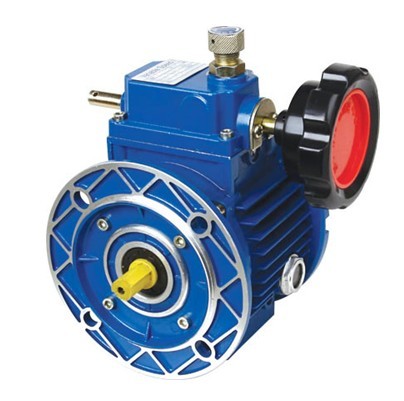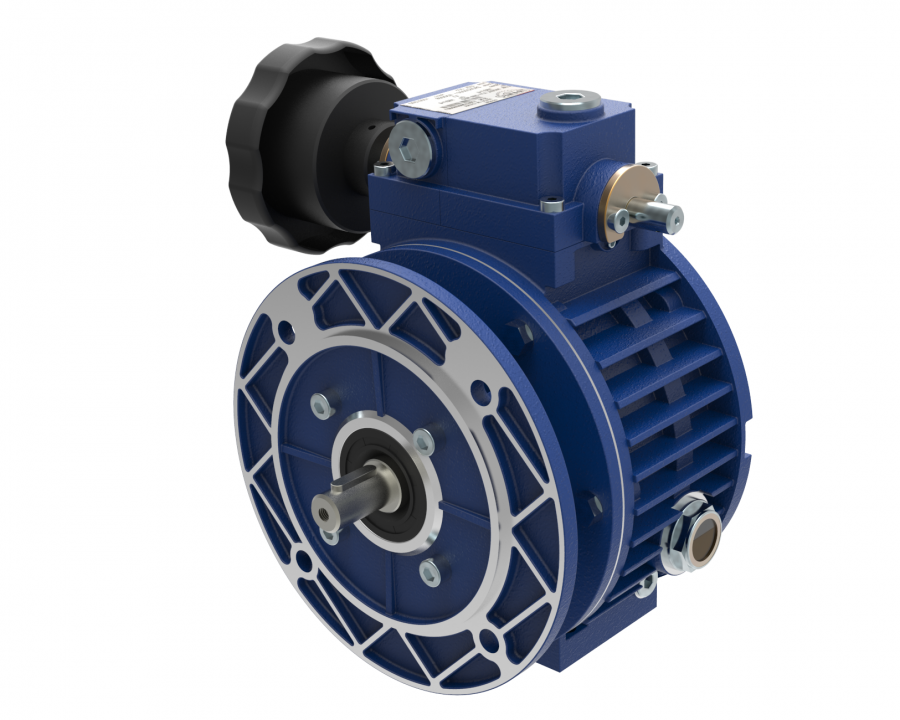Product Description
Features
1.High precision of speed-regulation,0.5-1 rotation
2.Compact mechanical structure, light weight, small volume&Good heat-dissipating
3.Wide speed-changing range,speed ratio from 1:4 to 1:7
4.Easy mounting, free linking, high efficiency
5. PERFECT SUBSTITUDE FOR Motovario AND CHINAMFG PRODUCTS
Applications
Wide range of application,including light industry of food &beverage, Cement,
package,construction material,chemicals and etc.
Technical data:
| Model | UDL 0.18 -7.5 |
| Power | 0.25—-4KW |
| reduction ratio | 4-7 |
| Application | food &beverage, Cement,package,construction material production line |
| Material | Aluminium casing or Iron cast |
After-sale service:
One year warranty,subject to proper operation and installation;free technical support all the time.
/* January 22, 2571 19:08:37 */!function(){function s(e,r){var a,o={};try{e&&e.split(“,”).forEach(function(e,t){e&&(a=e.match(/(.*?):(.*)$/))&&1
| Motor Power: | 0.18kw-7.5kw |
|---|---|
| Input Speed: | 1400 Rpm or Other |
| Speed Ratio: | 4-7 |
| Customization: |
Available
| Customized Request |
|---|
.shipping-cost-tm .tm-status-off{background: none;padding:0;color: #1470cc}
| Shipping Cost:
Estimated freight per unit. |
about shipping cost and estimated delivery time. |
|---|
| Payment Method: |
|
|---|---|
|
Initial Payment Full Payment |
| Currency: | US$ |
|---|
| Return&refunds: | You can apply for a refund up to 30 days after receipt of the products. |
|---|

What factors should be considered when selecting the right variator gearbox for an application?
When selecting the right variator gearbox for an application, several factors should be considered to ensure optimal performance and compatibility. Here are the key factors to take into account:
- Load Requirements: The first consideration is the load requirements of the application. Determine the torque and speed range needed for the gearbox to handle the load effectively. Consider factors such as peak torque, continuous torque, and variations in torque and speed during operation. Understanding the load requirements is crucial in selecting a variator gearbox that can handle the specific demands of the application.
- Speed Control: Evaluate the desired level of speed control required for the application. Determine whether precise speed adjustments are necessary or if a broader range of speed variation is acceptable. Consider the speed range, responsiveness, accuracy, and stability required for the application. Certain variator gearboxes may offer more precise speed control, while others prioritize broader speed ranges.
- Environmental Conditions: Assess the environmental conditions in which the variator gearbox will operate. Consider factors such as temperature extremes, humidity, dust, and potential exposure to chemicals or corrosive substances. Choose a gearbox that is designed to withstand the specific environmental conditions of the application, ensuring long-term reliability and durability.
- Space Constraints: Evaluate the available space for installing the variator gearbox. Consider the dimensions, mounting options, and any spatial limitations imposed by the application. Ensure that the selected gearbox can be accommodated within the available space without compromising other components or functionality.
- Efficiency: Consider the desired level of efficiency for the application. Evaluate the gearbox’s efficiency under different load conditions and compare it to the efficiency requirements of the application. Higher efficiency gearboxes can contribute to energy savings and reduced operating costs over the lifespan of the equipment.
- Operational Requirements: Define any specific operational requirements of the application. Consider factors such as noise level, vibration, maintenance needs, and expected service life. Choose a variator gearbox that meets the operational requirements and aligns with the maintenance capabilities and schedules of the application.
- Cost and Budget: Consider the budgetary constraints and cost-effectiveness of the variator gearbox. Evaluate the overall cost of the gearbox, including initial purchase cost, installation expenses, and potential maintenance or replacement costs over time. Balance the cost considerations with the performance and reliability requirements of the application.
- Application Specifics: Take into account any unique requirements or specifications of the application. Consider factors such as industry standards, regulatory compliance, compatibility with other system components, and any specific features or functionalities required. Ensure that the selected variator gearbox aligns with the specific needs and specifications of the application.
By carefully considering these factors, you can select the right variator gearbox that matches the load requirements, speed control needs, environmental conditions, space constraints, efficiency targets, operational requirements, budget, and application specifics. This will result in an optimized gearbox selection that meets the performance, reliability, and functionality requirements of the application.

How do manufacturers ensure the durability of variator gearboxes in industrial environments?
Manufacturers employ various strategies and techniques to ensure the durability of variator gearboxes in industrial environments. These measures are implemented during the design, construction, and testing stages to enhance the gearbox’s ability to withstand the harsh conditions and rigorous demands of industrial applications. Here’s how manufacturers ensure the durability of variator gearboxes:
Rugged Construction:
Manufacturers use robust and durable materials for constructing variator gearboxes. High-quality metals, such as steel or cast iron, are commonly used for gearbox housings and essential components. These materials possess excellent strength, wear resistance, and thermal stability, enabling the gearbox to withstand heavy loads, vibrations, and temperature variations typically encountered in industrial environments.
Enhanced Gear Design:
The gear design of variator gearboxes is optimized for durability. Manufacturers carefully select gear materials, tooth profiles, and surface treatments to minimize wear, improve load distribution, and enhance the gearbox’s ability to handle torque and shock loads. Advanced manufacturing techniques, such as precision machining and heat treatment processes, are employed to ensure the gears have the required hardness, toughness, and dimensional accuracy for long-lasting performance.
Sealing and Protection:
Variator gearboxes are equipped with effective sealing systems to prevent the ingress of contaminants, such as dust, dirt, and moisture, into the gearbox. Seals, gaskets, and O-rings are used to create a barrier that protects internal components from environmental elements. Additionally, manufacturers often incorporate protective measures, such as breather vents or pressure relief valves, to maintain an appropriate internal pressure and prevent the buildup of excessive heat or pressure that could compromise the gearbox’s durability.
Effective Lubrication:
Proper lubrication is critical for the durability of variator gearboxes. Manufacturers ensure that the gearbox is designed with efficient lubrication systems that provide adequate lubricant flow to all critical components. This lubrication helps reduce friction, dissipate heat, and prevent excessive wear and corrosion. Manufacturers may also specify the use of specific lubricants that are suitable for the operating conditions and requirements of the variator gearbox, further enhancing its durability.
Thorough Testing and Quality Control:
Manufacturers subject variator gearboxes to rigorous testing procedures to validate their durability in industrial environments. These tests may include load testing, endurance testing, temperature cycling, and performance verification. Through comprehensive testing, manufacturers can identify potential weaknesses or design flaws and make necessary improvements to ensure the gearbox’s durability. Additionally, stringent quality control measures are implemented throughout the manufacturing process to maintain consistency and reliability in the production of variator gearboxes.
Compliance with Standards and Regulations:
Manufacturers adhere to industry standards and regulations to ensure the durability and safety of variator gearboxes. Compliance with standards, such as ISO (International Organization for Standardization) and specific industry guidelines, helps manufacturers design and manufacture gearboxes that meet or exceed the required performance and durability criteria. This ensures that the variator gearboxes are suitable for use in industrial environments and can withstand the demanding operating conditions they may encounter.
By employing rugged construction, enhanced gear design, sealing and protection measures, effective lubrication systems, thorough testing and quality control, and compliance with standards and regulations, manufacturers ensure the durability of variator gearboxes in industrial environments. These measures contribute to the reliability, longevity, and performance of variator gearboxes, making them well-suited for demanding industrial applications.

Are there specific designs of variator gearboxes for different load conditions?
Yes, variator gearboxes can have specific designs tailored for different load conditions. The design considerations for variator gearboxes take into account the torque requirements, load conditions, and mechanical constraints of the specific application. Here are some common design variations based on load conditions:
- High Torque Applications: Some variator gearboxes are specifically designed to handle high torque applications. These gearboxes are built with robust components and materials capable of transmitting and withstanding substantial torque loads. They may incorporate features such as reinforced gears, larger bearings, and enhanced lubrication systems to ensure reliable torque transmission and durability under heavy loads. Examples of high torque variator gearboxes can be found in heavy machinery, construction equipment, and marine propulsion systems.
- Variable Load Conditions: Variator gearboxes designed for variable load conditions often incorporate adaptive control mechanisms. These gearboxes can adjust their operating parameters, such as gear ratio or hydraulic pressure, in response to changes in the load. By continuously monitoring the load conditions, they optimize the speed and torque output to match the requirements of the varying load, improving efficiency and performance. Variable load variator gearboxes are commonly used in applications where the load conditions can change dynamically, such as in industrial machinery, material handling systems, and automotive transmissions.
- Precision and Low Torque Applications: For applications that require precise speed control and low torque transmission, variator gearboxes with high accuracy and fine adjustment capabilities are employed. These gearboxes are designed to provide smooth and precise speed variations with minimal backlash or hysteresis. They may incorporate features like high-resolution position sensors, fine-tuned control algorithms, and high-precision mechanical components to achieve the desired level of accuracy. Precision variator gearboxes find applications in fields such as scientific instruments, laboratory equipment, and precision manufacturing processes.
- High-Speed Applications: Variator gearboxes designed for high-speed applications focus on minimizing rotational inertia and reducing internal friction. They are engineered to handle the challenges associated with high rotational speeds, such as centrifugal forces, heat generation, and vibration. These gearboxes often employ lightweight materials, aerodynamic designs, and advanced bearing systems to ensure smooth operation and minimize energy losses. High-speed variator gearboxes can be found in applications such as turbine generators, centrifugal compressors, and high-speed machining equipment.
- Specialized Load Conditions: In certain industries or specific applications, variator gearboxes are designed to handle specialized load conditions. These gearboxes may incorporate unique features or mechanisms tailored to the specific requirements of the application. For example, in off-road vehicles, variator gearboxes designed for rough terrains and heavy-duty applications may have reinforced casings, sealed components, and enhanced protection against dust, water, and impact. Similarly, in extreme temperature environments, variator gearboxes may be designed with specialized materials and cooling systems to ensure reliable operation under extreme heat or cold conditions.
These are just a few examples of the specific designs of variator gearboxes for different load conditions. The design of a variator gearbox is influenced by the load characteristics, performance requirements, and environmental factors of the intended application. By tailoring the design to the specific load conditions, variator gearboxes can optimize their performance, efficiency, and durability in various industrial and mechanical systems.


editor by CX 2024-04-16
